When you plant French marigolds along with vegetable plants in your garden – great things happen. Not only do you fill your garden with the beauty and color of flowering annuals, you also can help protect and power your vegetable plants!
Marigolds are one of the most popular annual flowers to grow in backyard gardens – and for good reason. The big blooming flower grows easily from seed and can quickly fill garden spaces with beautiful blooms in all kinds of fiery shades of red, orange, and yellow.
Marigolds are also incredibly durable plants, being both drought and heat resistant. But their benefits go beyond just being tough and adding stunning color to your vegetable garden. As it turns out, they can not only help your vegetable plants perform better, they can help keep them safe too!
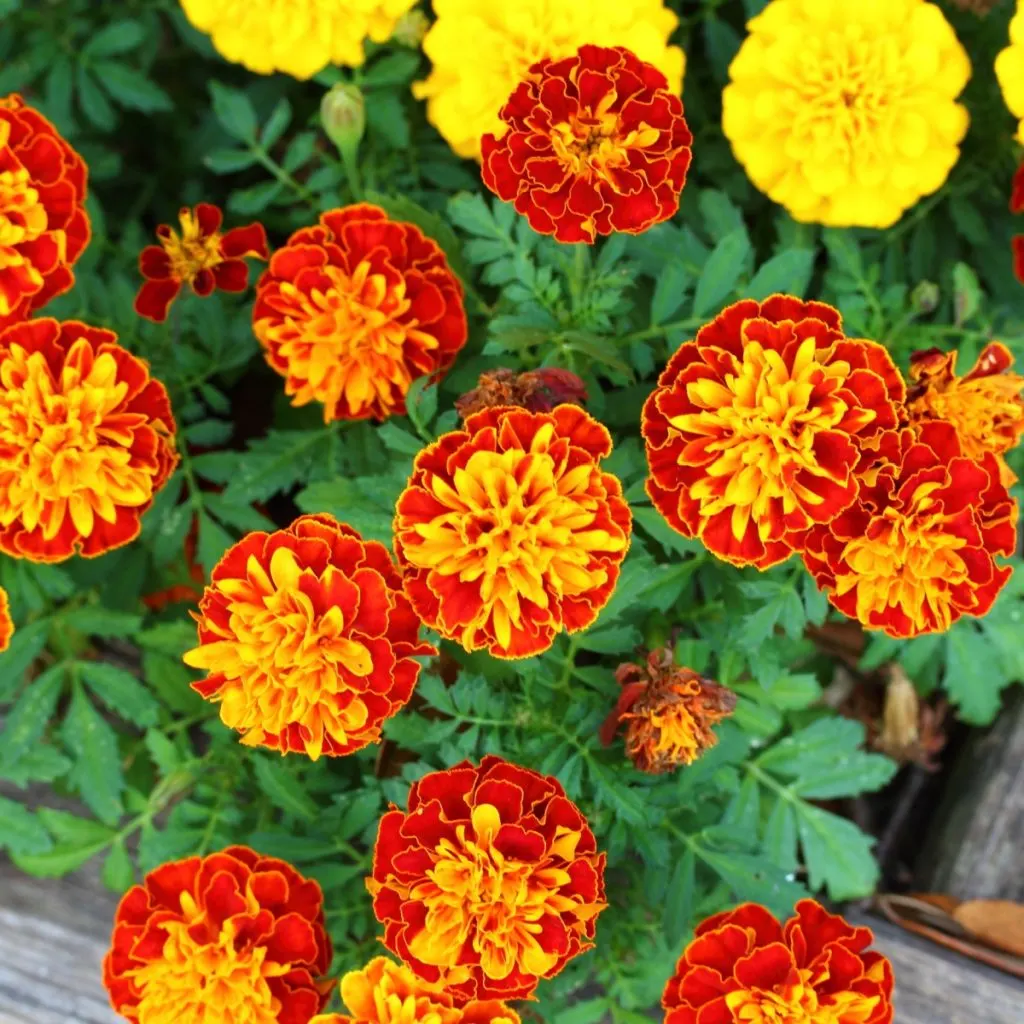
Marigolds truly are one of the best companion plants you can grow in a vegetable garden. With their multiple bright blooms, they draw pollinators in droves. And those same blooms are also perfect for repelling pests and insects – which happen to be the same ones that can quickly decimate a garden.
But as you will see below, even though all marigold varieties can help in a vegetable garden, there is one variety, the French marigold, that stands heads and shoulders above all other marigold types!
Planting French Marigolds In A Vegetable Garden
Types Of Marigolds
There are three main types of marigolds – African marigolds, Signet marigolds and French marigolds. Of the three, African marigolds are the largest type, reaching a massive 3 to 4 feet in height.
African marigolds produce multiple blooms that can measure around 5 inches each. But due to their larger sizes, they don’t work as well for growing in vegetable garden spaces. All too often, they can shade vegetable plants from getting the sun they need.
Signet marigolds, on the other hand, are probably the least well-known of the marigold varieties. They have more of a mounding habit, growing only around 6 inches or shorter. The advantage of signet marigolds is that the petals are edible – but their small stature does not attract as many beneficial pests.
French marigolds, meanwhile, steal the show for helping out in a vegetable garden. Not only are they a near perfect size at ten to twelve inches of height at maturity, their two inch blooms are big enough to bring a whole slew of pollinators and beneficial insects, without being too big to shade out vegetable plants. And, they have gorgeous flowers!
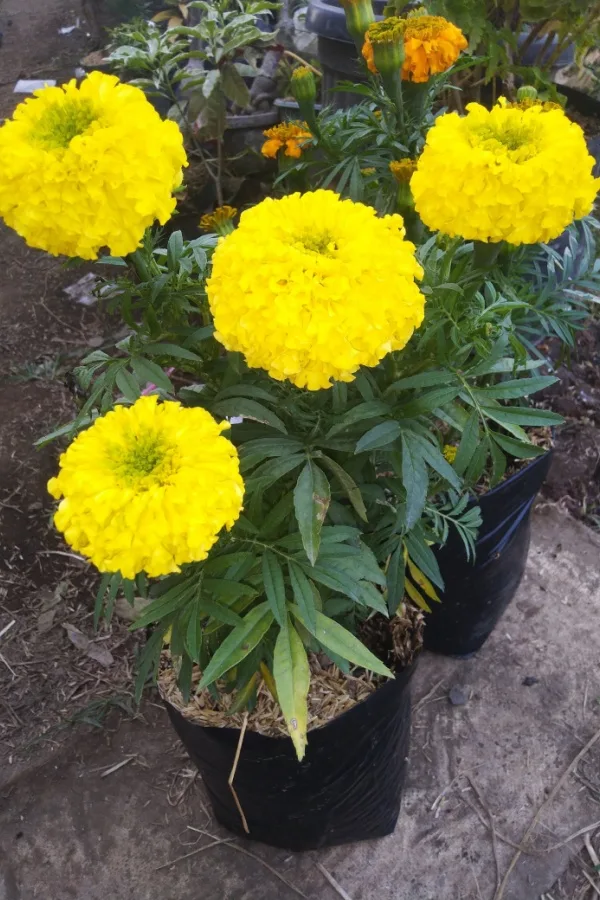
But more than anything else, these plants are a powerhouse of goodness in the garden. They are at the top of the list for ease of planting – and when it comes to repelling pests and bringing in pollinators, their pungent blooms and foliage can simply outwork any other companion plant around – all while looking stunningly beautiful.
Here is a look at just how incredible French marigolds are – and why you need to plant them in your vegetable garden this year!
4 Big Reasons You Should Be Planting French Marigolds In Your Vegetable Garden This Year
#1 Repelling Pests
One of the best reasons to plant French marigolds in your vegetable garden is their amazing ability to repel all sorts of different pests and insects.
The oils and aroma from French Marigolds are extremely strong. It certainly isn’t the pleasant, floral scent you get from smelling a rose or another fragrant flower. It’s so strong that many insects simply can’t stand them – including cabbage bugs, whiteflies, nematodes, tomato hornworms, squash bugs and mosquitoes.
Listen In Below To Our Podcast On The Benefits Of The Mighty Marigold!
But in addition to insects, French marigolds have also been known to repel bigger pests like rabbits, squirrel and deer. Again, the animals, much like the insects, are completely put off by the scent the flower gives off.
To make the most of their strong scent, plant several French Marigolds all along the border of your vegetable garden. Be sure to include them among typically sought-after favorites like tomatoes, squash, cucumbers, and cabbages. The more marigolds you can plant, the better protection your vegetables will have!
#2 Bringing In Pollinators – Why To Plant French Marigolds In A Vegetable Garden
While French marigolds are great for repelling insects and other pests, they also happen to be perfect for attracting loads of beneficial pollinators to your property.
Honeybees, wasps, and butterflies are all highly attracted to the multiple colorful blooms that marigolds produce. These same pollinators then travel from bloom to bloom, pollinating the vegetable crops in your garden as well .
Each marigold plant can produce hundreds of blooms throughout the growing season. In fact, once marigolds start blooming, they will continue to do so until the first frost, long after other annuals stop.
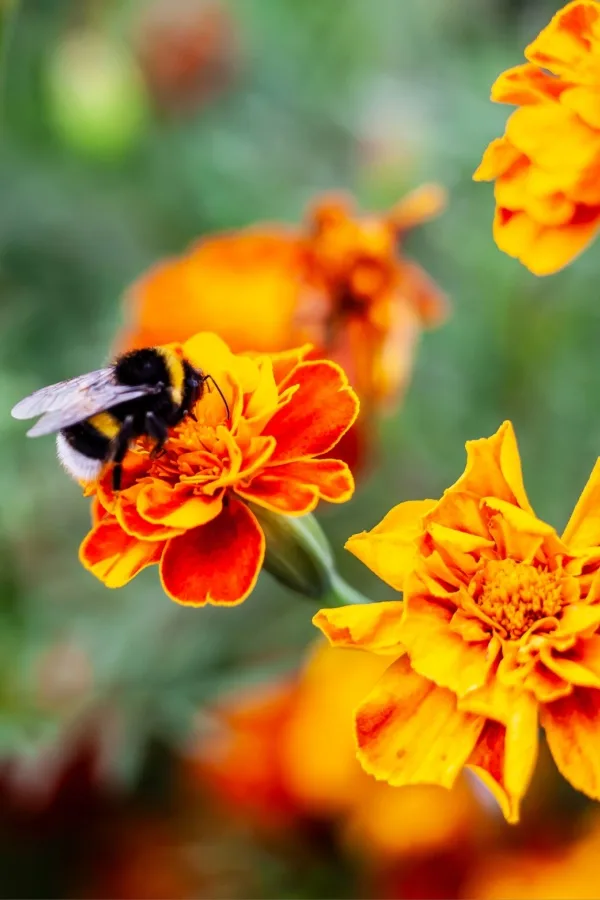
This steady supply of blooms is great for attracting pollinators to your garden well into late summer and early fall. That can be key for late season crops that sometimes struggle to be pollinated.
#3 Beautifying Your Garden – Why To Plant French Marigolds In A Vegetable Garden
One of the most obvious reasons for planting French Marigolds in your vegetable garden is that they add beauty and interest to your space. There’s nothing better than looking out into your garden to see a whole host of fiery red, yellow and orange blooms pop out against the green foliage of your vegetable plants.
Vegetable gardens are notorious for being a little less than colorful. But when marigolds are part of the planting scheme – that all changes. Especially with the two French marigold varieties below that grow easily from seed.
Unlike some annual flowers, French marigolds are incredibly easy to plant and grow from seed. Due to their more compact size, French marigolds can be planted directly in the soil when your other garden vegetables go into the ground.
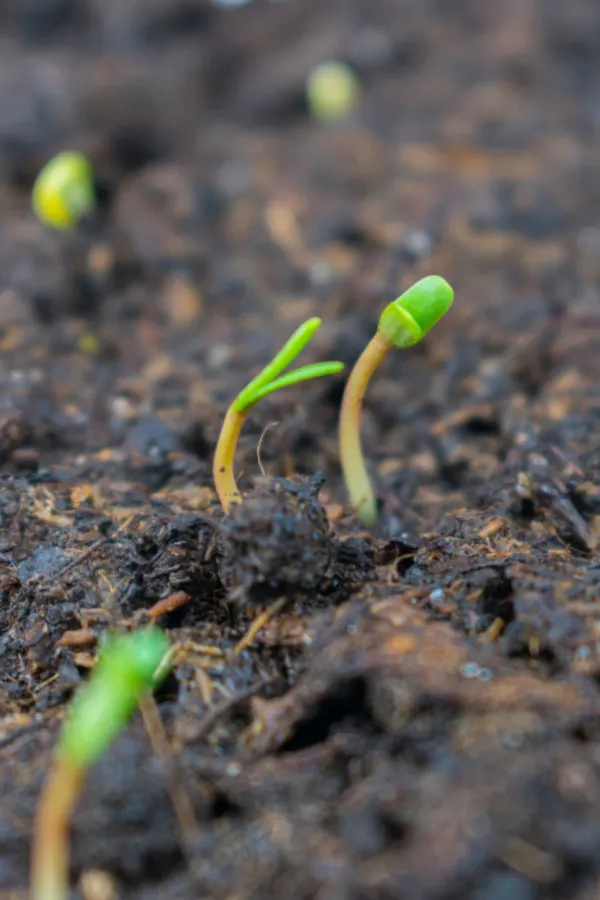
The Best Way To Plant French Marigolds
Sow French marigold seeds in well-draining, fertile soil. Choose spots in your garden that receive full sun for the best bloom output. Cover seeds with a light ⅛ inch of soil and then water in. The seeds should germinate in just one to two weeks, however, some can sprout in as little as three days.
When planting seeds outside, wait until the soil reaches a temperature of around 65º Fahrenheit or warmer. The warmer soil will allow the seeds to germinate and become established more quickly. And the sooner the plants can grow and produce blooms, the quicker they can go to work attracting pollinators and repelling pests!
French marigolds also thrive when grown in pots and containers. A 12-inch pot can easily grow two to three marigold plants. Growing in containers also has the additional advantage of allowing you to easily move the goodness of marigolds anywhere you need!
#4 Inexpensive To Grow
Last but not least, marigolds are so inexpensive to grow! Not only are marigolds fairly inexpensive to purchase from seed, their seeds can also easily be saved from year to year.
In fact, due to their multiple bloom sets throughout the entire growing season, French marigolds are one of the easiest flowers to save seeds from. One single flower can produce nearly a hundred seeds.
To save French marigold seeds, allow a couple of blooms to completely dry out on the plant. The seed head should be completely brown and shriveled up. Once you see this, cut the seed head off. Next, separate the individual seeds and spread them out to dry on a paper towel or plate. When the seeds are completely dry, you can store them for the following season.
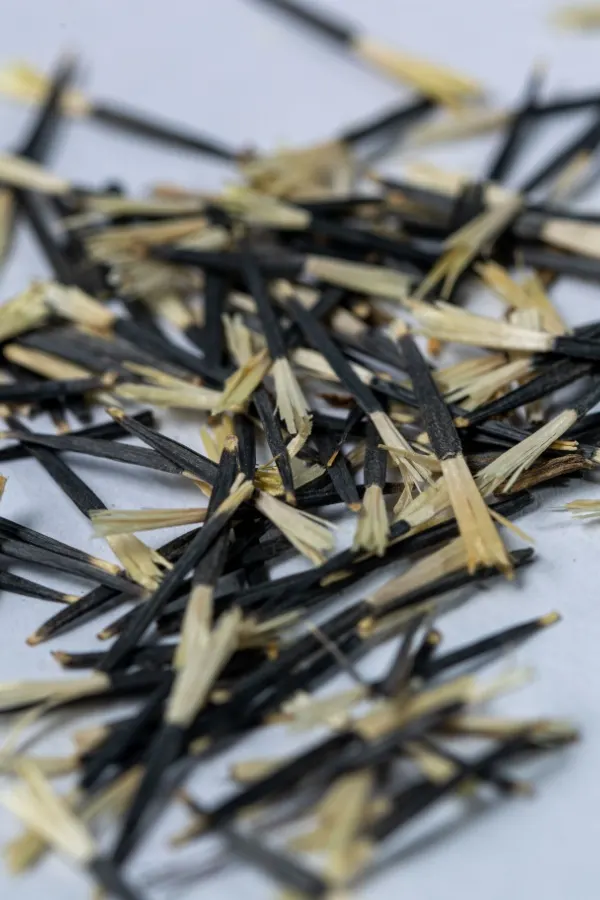
French Marigolds are either open-pollinated or hybrids. Open-pollinated seeds will grow into exact copies of the parent plant. While you can still save the seeds of hybrid varieties, you will likely end up with a different looking marigold than the plant you saved the seeds from.
To read more in-depth about saving marigold seeds, see our article: “How To Save Marigold Seeds From Your Marigolds!”
Here’s to protecting your vegetable garden naturally while attracting pollinators and adding beauty to your space this growing season – with French marigolds!
This Is My Garden
Follow Our Facebook Page For Great Gardening Tips And Advice! This Is My Garden Facebook Page
This Is My Garden is a garden website created by gardeners, for gardeners. Jim and Mary Competti have been writing gardening, DIY and recipe articles and books and speaking for over 15 years from their 46 acre Ohio farm. They publish three articles every week, 52 weeks a year. Sign up today to follow via email, or follow along!
